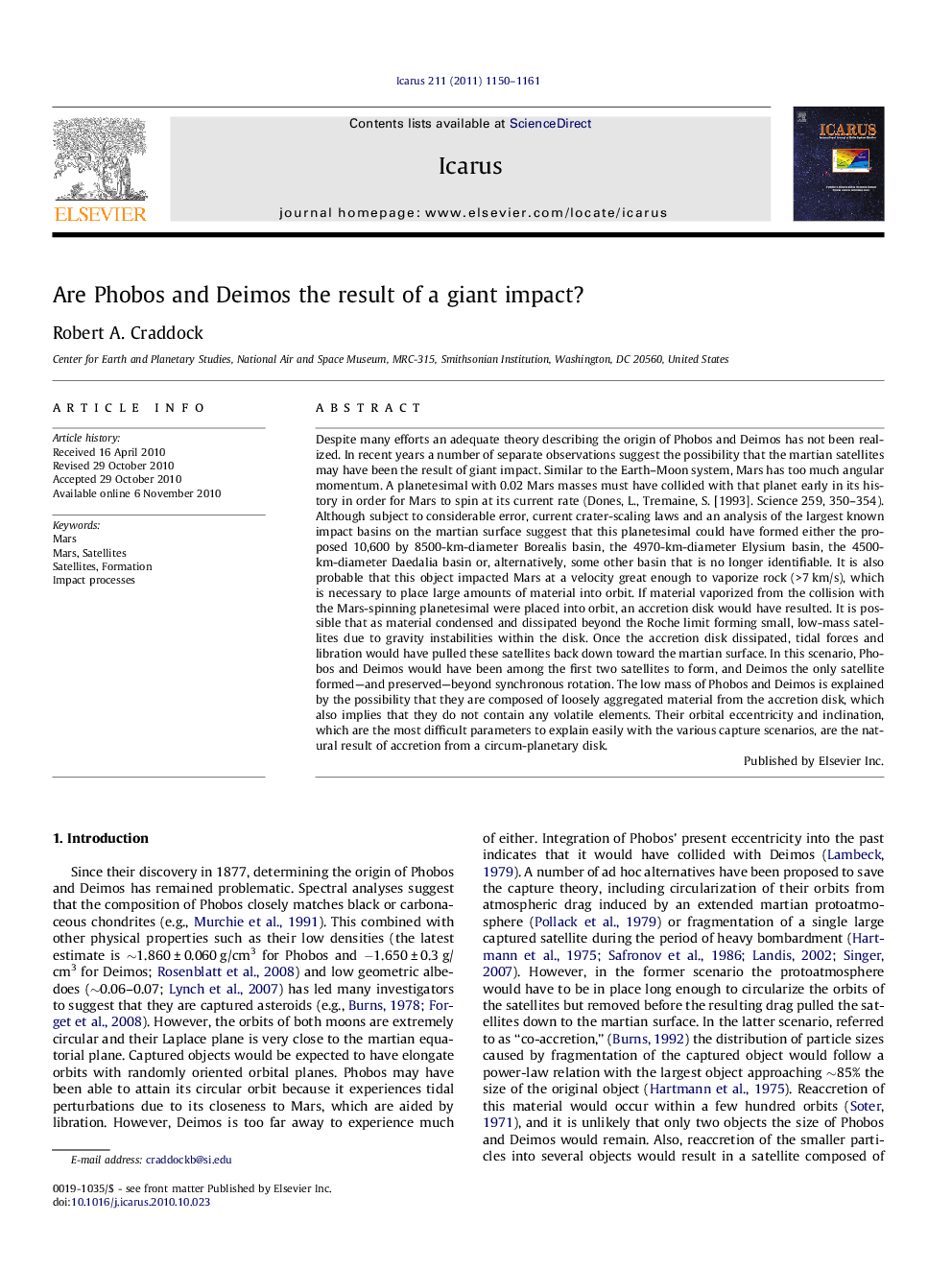| کد مقاله | کد نشریه | سال انتشار | مقاله انگلیسی | نسخه تمام متن |
|---|---|---|---|---|
| 1773947 | 1021152 | 2011 | 12 صفحه PDF | دانلود رایگان |

Despite many efforts an adequate theory describing the origin of Phobos and Deimos has not been realized. In recent years a number of separate observations suggest the possibility that the martian satellites may have been the result of giant impact. Similar to the Earth–Moon system, Mars has too much angular momentum. A planetesimal with 0.02 Mars masses must have collided with that planet early in its history in order for Mars to spin at its current rate (Dones, L., Tremaine, S. [1993]. Science 259, 350–354). Although subject to considerable error, current crater-scaling laws and an analysis of the largest known impact basins on the martian surface suggest that this planetesimal could have formed either the proposed 10,600 by 8500-km-diameter Borealis basin, the 4970-km-diameter Elysium basin, the 4500-km-diameter Daedalia basin or, alternatively, some other basin that is no longer identifiable. It is also probable that this object impacted Mars at a velocity great enough to vaporize rock (>7 km/s), which is necessary to place large amounts of material into orbit. If material vaporized from the collision with the Mars-spinning planetesimal were placed into orbit, an accretion disk would have resulted. It is possible that as material condensed and dissipated beyond the Roche limit forming small, low-mass satellites due to gravity instabilities within the disk. Once the accretion disk dissipated, tidal forces and libration would have pulled these satellites back down toward the martian surface. In this scenario, Phobos and Deimos would have been among the first two satellites to form, and Deimos the only satellite formed—and preserved—beyond synchronous rotation. The low mass of Phobos and Deimos is explained by the possibility that they are composed of loosely aggregated material from the accretion disk, which also implies that they do not contain any volatile elements. Their orbital eccentricity and inclination, which are the most difficult parameters to explain easily with the various capture scenarios, are the natural result of accretion from a circum-planetary disk.
Research highlights
► A planetesimal with 0.02 Mars masses collided with Mars to establish its spin rate.
► The resulting impact may have created the Borealis, Elysium, or Daedalia basin.
► A giant impact placed material into orbit forming an accretion disk.
► Small moonlets formed from the accretion disk, including Phobos and Deimos.
► This model can explain the orbital eccentricity and inclination Phobos and Deimos.
Journal: Icarus - Volume 211, Issue 2, February 2011, Pages 1150–1161